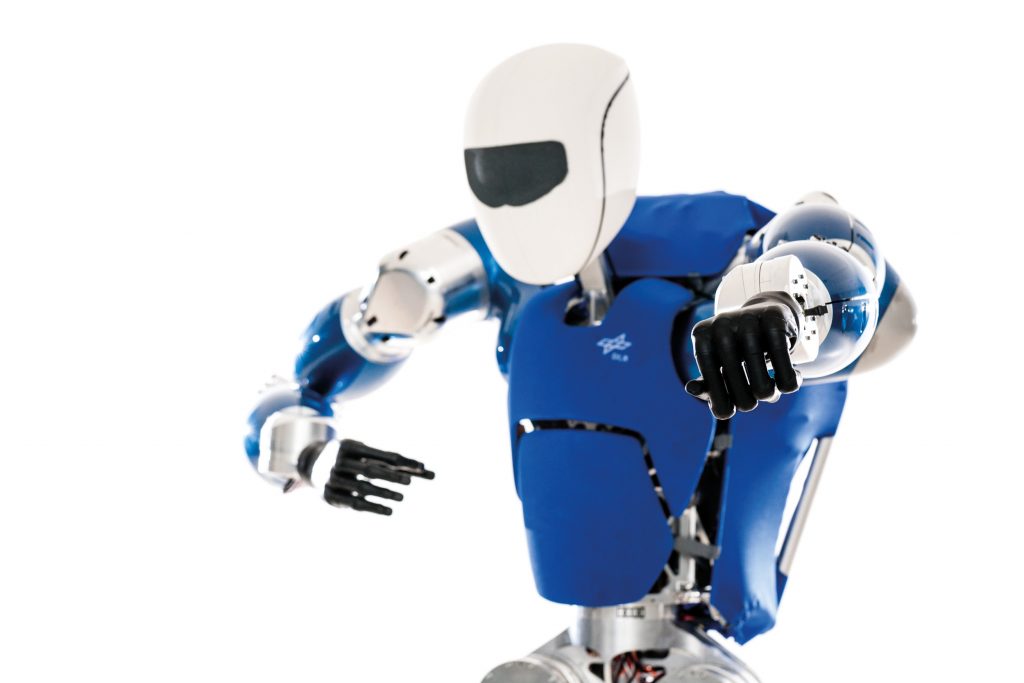TOrque controlled humanoid RObot
Legged locomotion has a number of advantages compared to wheel-based systems. For instance, a two-legged robot does not require a large footprint and is able to step over obstacles. However, the reduced footprint brings challenges such as gait stabilisation and balance control. The two-legged humanoid robot TORO was developed at the DLR Institute of Robotics and Mechatronics. The torque controlled drive units adopted from DLR’s lightweight arms are among the robot’s notable features. It is a key technology that enables safe interaction with humans as well as for robust contact with unknown environments. Balance control using multiple contact points on the arms and legs requires precise control of the contact forces. The methods developed for TORO are general and can also be applied to four- and six-legged robots.
TORO is used within the EU COMANOID project to analyse the applicability of humanoid robots in aircraft assembly. The project examines tasks that present physical stress for human workers due to a non-ergonomic body posture. In the presented use case, TORO autonomously fnds its way through a manufacturing environment and attaches a component to an aircraft fuselage. Whenever necessary, it uses its arms to provide additional support or to reach the required mounting position. The robot’s humanoid form allows it to reuse already available tools, environment features – such as stairs – and safely share the environment with humans.
German Aerospace Center (DLR)
Christian Ott · E-Mail: christian.ott@dlr.de · DLR.de/en
